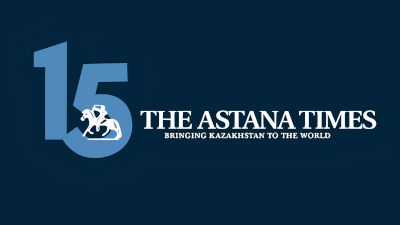ASTANA – The Zhambyl Region is one of Kazakhstan’s most historically rich regions, home to ancient mysteries, sacred monuments, and unique artifacts. Among the more than 200 ancient settlements in the area, Auliebastau is a significant part of the Taraz oasis.
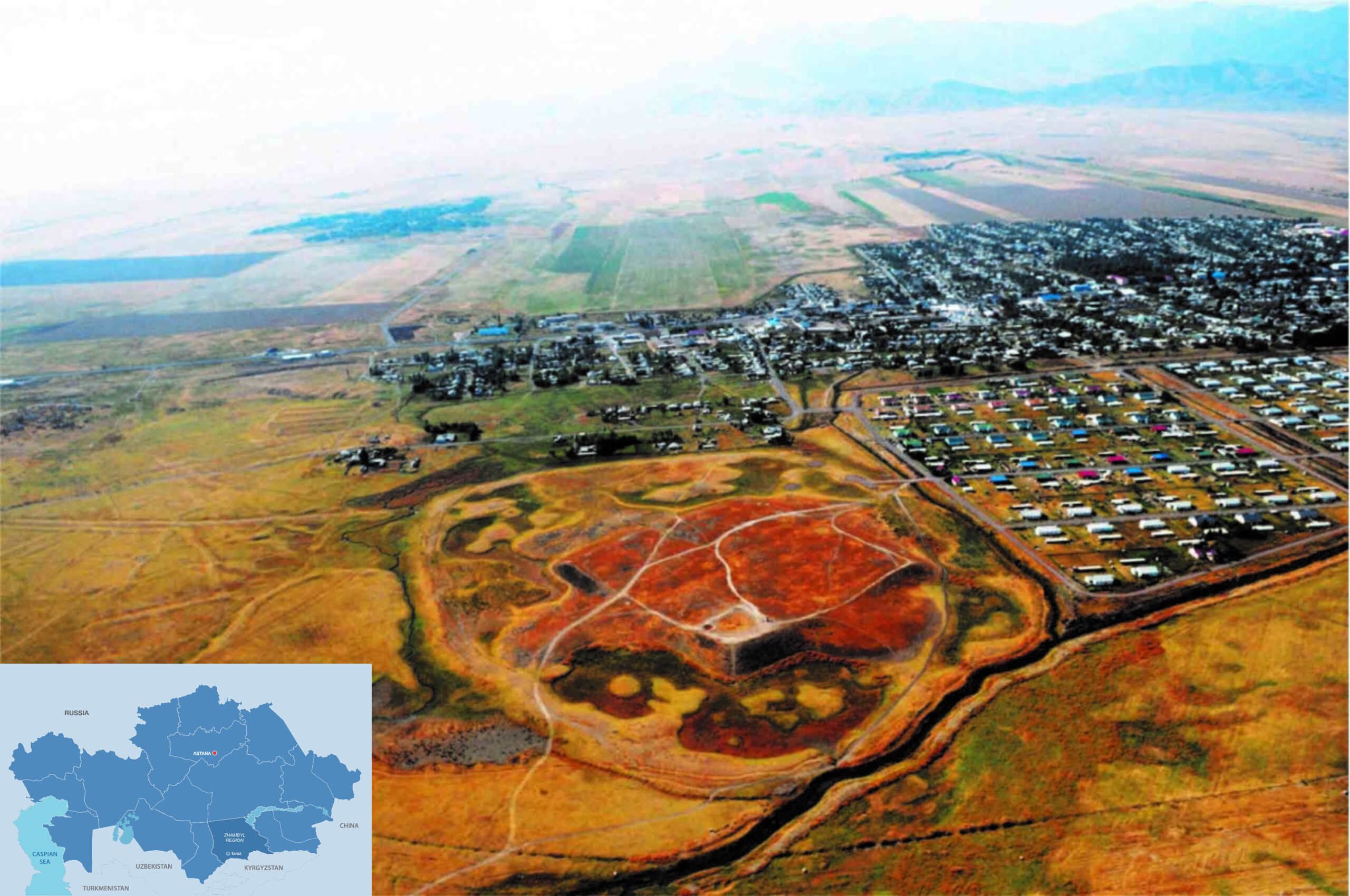
The medieval city of Kulan. Photo credit: Archive of the historical and local history museum of the Zhambyl Region. Click to see the map in full size. The map is designed by The Astana Times.
In the Middle Ages, the coexistence of nomadic and sedentary lifestyles in the Shu-Talas Valley gave rise to numerous towns that became thriving trade hubs. In 2016, five historical and cultural landmarks from Zhambyl were added to UNESCO’s World Heritage List, including Kostobe, Ornek, Balasagun, Kulan, and the Akyrtas Palace complex. Restoration efforts continue across these sites.
A jewel in Taraz’s Golden Ring
Once a bustling cultural and economic hub under the Karakhanid dynasty, Taraz featured a “Golden Ring” of settlements comprising towns, estates, fortresses, and castles. Auliebastau, located about one kilometer from the Taraz-Zhanatas road and three kilometers from the Western Europe-Western China highway, dates back to the sixth–tenth centuries. The ruins, shaped by time and nature, frame the site as mounds.
According to historian and archaeologist Galiya Alimzhanova, Auliebastau was a key Silk Road caravan stop, thriving due to its fertile lands, water sources, and strategic location. The town played an important political and economic role in the Western Turkic Khaganate.
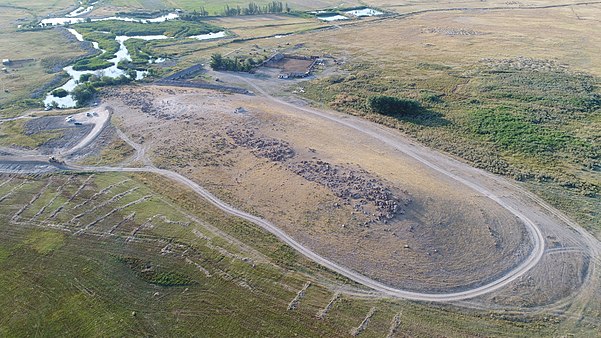
Auliebastau was a key Silk Road caravan stop. Photo credit: Wikipedia
Archaeological exploration of Auliebastau began in the late 19th century, with Russian archaeologist Vasily Bartold documenting its topography and historical importance. Despite periods of destruction and revival, invasions by the Dzungars and the rule of the Kokand Khanate led to its eventual abandonment. The reasons behind its desertion remain an enigma for modern researchers.
The sacred spring of Auliebastau
Next to the ruins lies a sacred spring, known as Aulie-bastau, feeding into a small lake. The spring maintains a steady temperature of 16 degrees Celsius year-round.
A 2009 study by the Research Institute of Cardiology and Internal Diseases found its therapeutic properties comparable to other renowned medicinal waters in Kazakhstan. The spring contains 17 vital minerals, including magnesium, calcium, iodine, and silicic acid, offering potential health benefits.
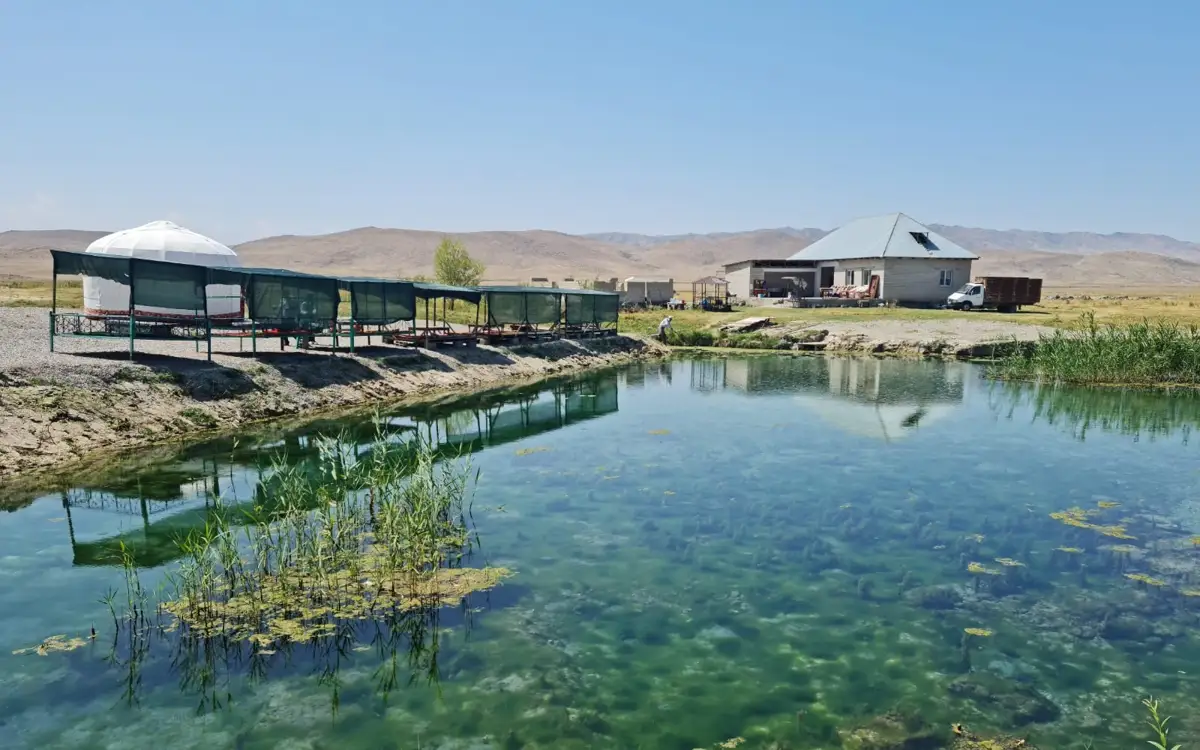
The sacred spring of Auliebastau. Photo credit: inform.kz
For generations, local shepherds shared stories of the spring’s healing powers, with tales of sick livestock recovering after drinking from its waters. Today, hundreds of visitors come to collect its water, believing in its restorative properties. Even in winter, pilgrims brave the cold to bathe in the spring, especially during the Orthodox holiday of Epiphany.
The spring remains a pilgrimage site for residents of Zhambyl and beyond, drawing visitors from across Kazakhstan and the Kyrgyz Republic who believe in the sacred spirit said to bless its waters.
The scatter of ancient settlements in Zhambyl land
The ancient settlement of Taraz, dating back to the first century and lasting through the 19th century, is the Zhambyl Region’s largest historical site.
Once buried beneath the modern city’s market, the site emerged during archaeological excavations in 2011. The findings, now preserved at the Ancient Taraz Museum, offer insight into a city over 2,000 years old. This museum combines open-air and indoor exhibits.
The Akyrtas complex, constructed from red stone, remains an enigma to historians. First described in the seventh century by Chinese monk Xuanzang as “ruins of red stone,” its origins, builders, and purpose are still debated.
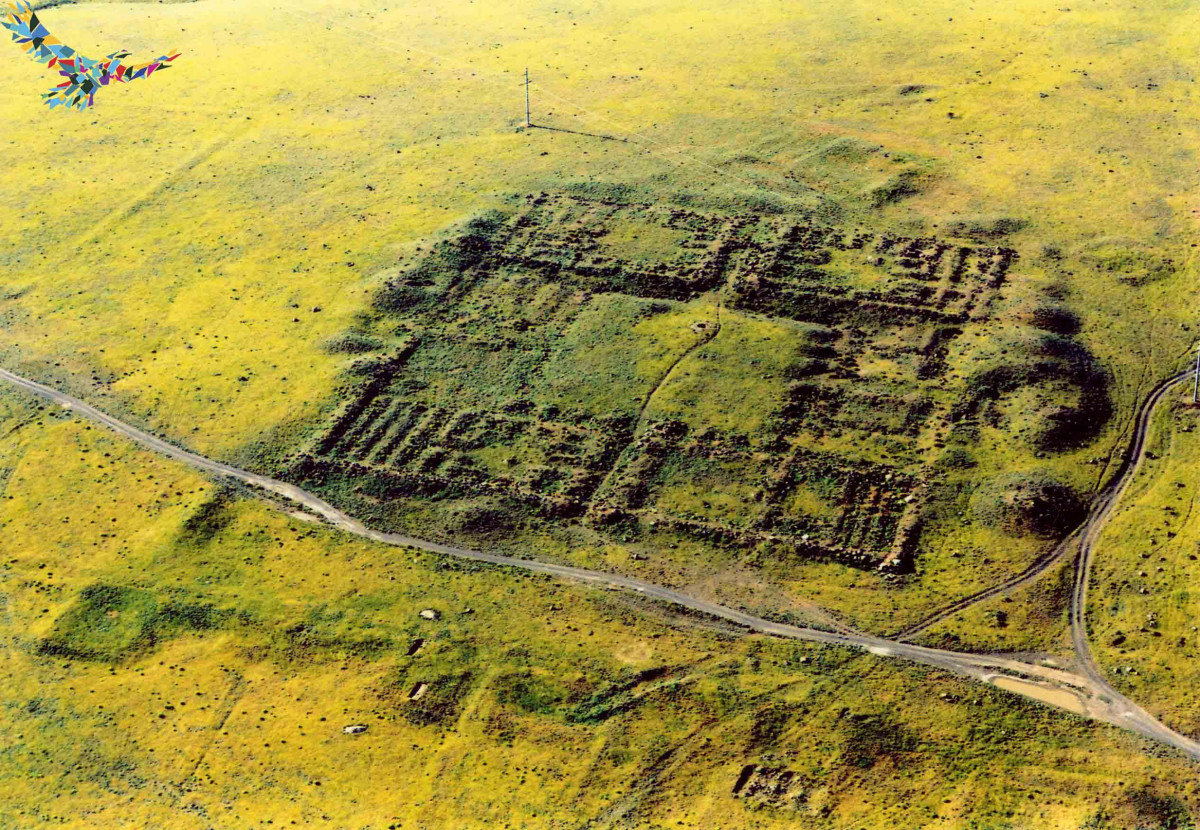
The Akyrtas complex. Photo credit: Archive of the historical and local history museum of the Zhambyl Region
Archaeological studies began in the mid-19th century under the Russian Academy of Sciences. Located in a tectonic fault zone with large underground voids, Akyrtas exhibits a natural anomaly. Archaeologists believe the site included residential buildings, storage facilities, and ancient plumbing. Its massive outer walls, up to five meters thick and an estimated height of 12–15 meters, sit atop a four-meter foundation, suggesting it served as a defensive structure. Similar architectural styles can only be found in Aleppo, Damascus, and Samaria.
The medieval city of Kulan, referenced in seventh-century Chinese and Arabic sources, is steeped in palace intrigues and historic events. Situated along the Great Silk Road, it featured a fortified citadel, a shahristan (urban center), rabads (suburbs), a ruler’s palace, a mosque, vineyards, and craft quarters.
Kulan was the site of a palace coup in the mid-eighth century, during which Khagan Ashina Syn, the last of the Western Turkic Khagans, was killed. Following his death, Arab forces captured the city. Modern excavations have uncovered Zoroastrian fire temples and intricate terracotta decorations, shedding light on its role during the Turgish Khaganate era.
Balasagun, nestled along the Aksu River, features palace ruins and residential complexes. First described in the 19th century, its cultural layers, spanning from the sixth to 13th centuries, are over nine meters thick. Restoration efforts continue to unveil its secrets.
The ancient city of Ornek lies along the Shybindy and Altyn-Su rivers. Research conducted by Kazakh archaeologists in the mid-1980s suggests Ornek may be the medieval city of Kulshub, referenced in ninth-century Arab geographic texts. Kulshub was ruled by Karluk landowners and served as the base for a prominent feudal lord.
Archaeologists uncovered an area believed to have housed a mosque dating to the tenth century. The first mosque in modern Kazakhstan, built in the seventh century, is located in Taraz. Experts believe Ornek was a well-fortified city with advanced infrastructure, craftsmanship, and culture.
Located near the Talas River, Kostobe features a Zoroastrian temple, carved terracotta, and burial structures known as “nauses”, crafted from clay, brick or stone.
Historians identify Kostobe as one of the largest settlements in the Talas Region. Chronicles refer to the city as Dzhamukat, founded in the sixth century by merchants from Bukhara. Soviet archaeologists conducted initial explorations in 1938, uncovering coins and ceramics from the sixth to 12th centuries. In the mid-1980s, researchers mapped the area, identifying a rural district adjacent to the city’s central core.
The Kostobe Palace, built between the sixth and tenth centuries, featured adobe bricks and pahsa blocks—compressed clay used in Central Asian construction. Interior walls displayed gypsum detailing and decorative paintings.
Among the most notable finds are the remains of a sanctuary adorned with carved terracotta and a Zoroastrian fire temple.
Beyond its historical cities, the Zhambyl Region boasts diverse attractions such as Lake Balkhash, the Merke Plateau, and the Aksu-Zhabagli protected area. Ancient sanctuary Tekturmas and mausoleums such as Aisha-Bibi and Babaja-Khatun draw visitors seeking cultural and spiritual experiences. Petroglyphs in the Karasai and Bota-Maimak ravines and the site of the Atlakh settlement, known for its pivotal Arab-Chinese battle, further enrich the region’s allure.
The article was originally published in Kazinform.

